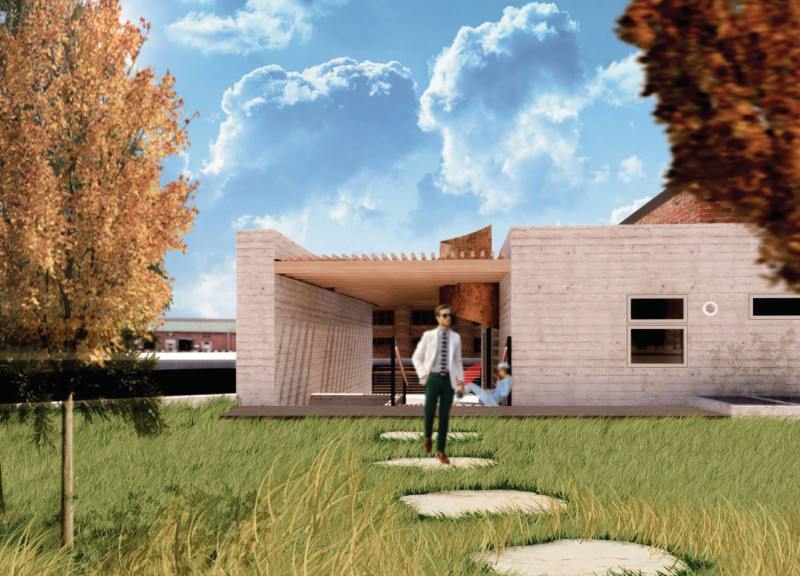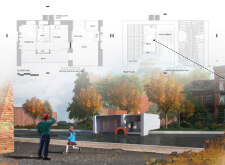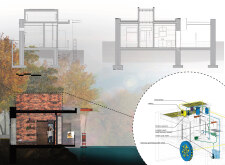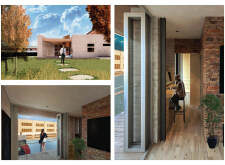5 key facts about this project
Adaptive Reuse of Historical Context
The Micro Mill emphasizes adaptive reuse, utilizing historical materials such as recycled brick, concrete, wood, and black steel. These selections are not only functional but also serve to maintain a visual continuity with the area's architectural legacy. The design incorporates compact housing units that are tailored for efficiency and flexibility in usage. Each unit comprises essential living areas, including a bedroom, bathroom, kitchen, and communal living space, facilitating a balanced lifestyle within a small footprint.
The architectural arrangements encourage social interaction and community engagement, particularly through the integration of shared outdoor spaces, such as rooftop gardens. This design fosters communal living while addressing sustainability challenges inherent in urban environments.
Sustainable Design Features
The sustainability aspects of the Micro Mill are significant. The integration of renewable energy technologies such as an electricity-generating water wheel demonstrates an innovative approach to harnessing local resources for energy needs. This can significantly reduce the overall environmental impact of the housing units. Additionally, the installation of heat recovery ventilation systems and specialized water filtration solutions further underlines the commitment to efficient resource management and environmental conservation.
Moreover, the architectural design promotes energy efficiency through intelligent placement of solar panels and green roofs, leveraging natural resources for energy and cooling during warmer months. These features function collectively to create a self-sustaining micro-community that prioritizes ecological responsibility within an urban context.
Exploration of Architectural Ideas
Unique design approaches within the Micro Mill project include the use of modular architectural layouts that allow for customization and flexibility according to the needs of residents. This aspect recognizes diversity in community requirements and allows for a more adaptable living environment. The strategic placement of structures along the Merrimack River highlights the historical relationship between the mills and the waterways while enhancing aesthetic appeal and accessibility.
By reimagining the potential of abandoned industrial sites, the Micro Mill project illustrates a practical approach towards urban redevelopment that honors local history while ushering in progressive architectural practices. The focus on community-centric design combined with modern sustainability principles positions this project as a meaningful reflection of contemporary architectural thought.
For a more detailed understanding of the Micro Mill project, including architectural plans, sections, and designs, readers are encouraged to explore the project presentation further. Engaging with these elements provides deeper insights into the architectural ideas that shape this unique initiative.


























